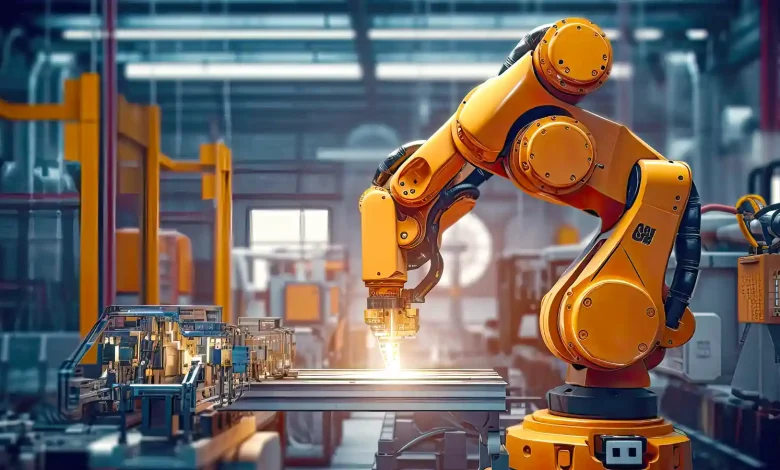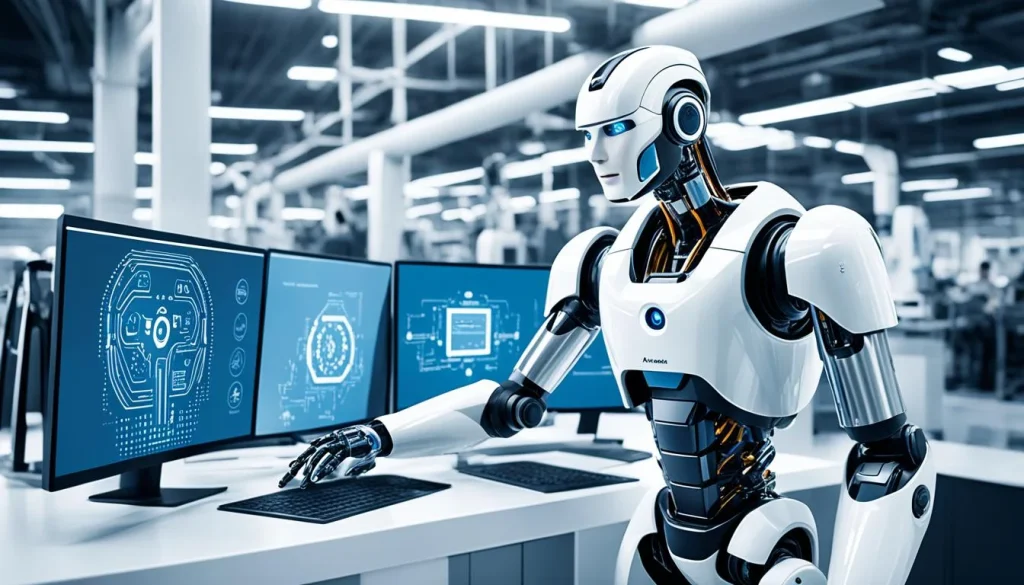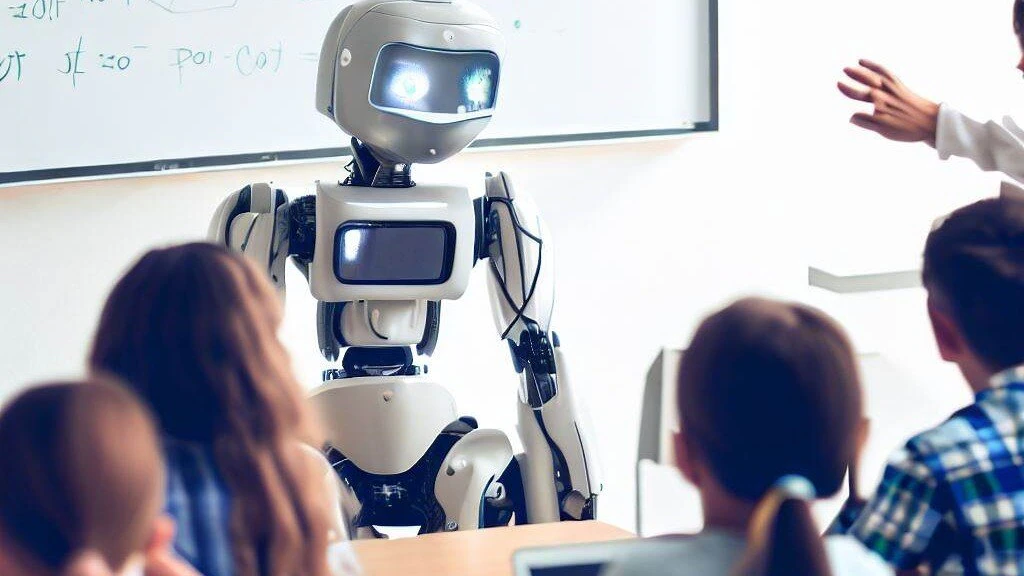How AI Is Reshaping the Job Market in North America

Introduction
The AI job market North America is undergoing a powerful transformation in the 2020s. Artificial intelligence (AI) technologies are not only automating routine tasks but also creating new job categories and reshaping existing roles across industries. This detailed guide explores how AI is reshaping the job market in North America, highlighting emerging trends, skill demands, challenges, and real-world examples.
Understanding the AI Job Market in North America
What Is the AI Job Market?
The AI job market North America encompasses all employment opportunities directly related to AI development, deployment, and integration, as well as roles transformed by AI technologies.
Current Landscape (2023–2025)
- Approximately 220,000 data science positions available in the U.S. alone in 2025.
- AI-related roles expanding rapidly, including machine learning engineers, generative AI specialists, and AI ethics officers.
- AI automates repetitive tasks, freeing humans for creative and strategic work.
AI’s Positive and Negative Impacts on Employment
Job Creation vs. Job Displacement
| Impact Type | Description | Example Roles |
|---|---|---|
| Job Creation | New roles emerging due to AI technology | AI Trainers, Human-AI Collaboration Specialists, LLM Engineers |
| Job Displacement | Automation replacing routine or manual jobs | Data Entry Clerks, Basic Financial Analysts, Manufacturing Operators |
- By 2025, AI may displace 85 million jobs but create 97 million new roles globally, with North America as a key growth hub.
Case Study: Healthcare AI Integration
A U.S. hospital implemented AI diagnostic tools, reducing some technical roles but creating specialized positions like AI-Radiology Integration Specialists, boosting overall employment by 15%.
How AI Is Transforming Existing Jobs

Job Role Evolution
| Profession | Traditional Tasks | AI-Augmented Tasks |
|---|---|---|
| Marketing | Campaign creation and data analysis | Predictive analytics and personalization |
| Financial Analysts | Data gathering and processing | Strategic analysis and communication |
| Healthcare Providers | Symptom diagnosis | Partnering with AI for complex cases |
Skill Shifts Required
- AI literacy and understanding of AI capabilities.
- Complex problem-solving and creativity.
- Emotional intelligence and human-centric skills.
Emerging AI Job Categories in North America
New Roles Created by AI
- AI Ethics Officers: Oversee fairness and transparency in AI systems.
- AI Trainers: Teach AI systems context and nuance.
- Human-AI Collaboration Specialists: Optimize workflows between humans and AI.
- Large Language Model (LLM) Engineers: Develop and maintain advanced AI models.
Growth Projections
- AI specialist roles growing 74% annually.
- North America expected to add 1.5 million AI-related jobs by 2025.
Regional AI Job Market Trends in North America

Key Growth Areas
- Tech Hubs: Silicon Valley, Seattle, Toronto lead AI job creation.
- Healthcare: AI-driven diagnostics and personalized medicine.
- Finance: Algorithmic trading, fraud detection, and customer personalization.
Challenges
- Visa and talent acquisition hurdles for international graduates.
- Need for continuous reskilling as AI evolves.
Preparing for the AI-Driven Job Market
Essential Skills for 2025 and Beyond
| Skill | Importance | Application |
|---|---|---|
| AI Literacy | High | Understanding AI tools and limits |
| Data Interpretation | High | Making sense of AI-generated insights |
| Strategic Thinking | Medium | Guiding AI-assisted decisions |
| Emotional Intelligence | High | Human-centric roles |
| Adaptability | High | Continuous learning and flexibility |
Education and Training
- Emphasis on STEM and AI-focused programs.
- Upskilling through online courses and certifications.
- Employer-led training initiatives.
Case Study: Legal Industry AI Transformation
A law firm integrated AI for contract review, reducing manual workload for paralegals. Paralegals shifted to client interaction and case strategy, increasing productivity by 40% and job satisfaction.
AI and Workforce Diversity in North America
- AI creates opportunities for diverse talent pools by enabling remote work and flexible roles.
- However, biases in AI systems require ethical oversight to ensure fairness.
AI Job Market North America
| Metric | Value |
|---|---|
| Projected AI-related jobs (2025) | 1.5 million new positions |
| AI job growth rate | 74% annual increase |
| Percentage of jobs impacted by AI | 60% with 30% task automation |
| Average salary premium for AI skills | 35% higher than non-AI roles |
The Future Outlook of AI in North America’s Job Market
- Continued growth of AI roles and integration across sectors.
- Increasing collaboration between humans and AI systems.
- Need for policies supporting workforce transition and lifelong learning.
AI Job Market North America: Industry-Specific Transformations
AI in Manufacturing and Automation

The AI job market North America is significantly impacted by automation in manufacturing. AI-powered robots and predictive maintenance systems streamline production lines, reducing downtime and increasing efficiency.
- Job Displacement: Routine manual jobs such as assembly line work are increasingly automated.
- Job Creation: New roles emerge in robot maintenance, AI system management, and data analysis.
Case Study: A Detroit automotive plant integrated AI-driven robotics, reducing manual labor by 30% but creating 500 new technical jobs in AI system oversight.
AI in Healthcare

Healthcare is one of the fastest-growing sectors in the AI job market North America.
- AI assists in diagnostics, personalized treatment plans, and administrative tasks.
- Roles such as AI health data analysts, telemedicine coordinators, and medical AI trainers are expanding.
Case Study: Mayo Clinic’s AI-powered diagnostic tools have improved accuracy and efficiency, leading to new positions focused on AI system training and patient data management.
AI in Finance and Banking

AI transforms financial services by automating fraud detection, risk assessment, and customer service.
- AI-driven algorithms handle large data sets for investment decisions.
- Jobs now include AI compliance officers, algorithm auditors, and digital customer experience managers.
Case Study: JPMorgan Chase uses AI for contract review, reducing legal team workloads and creating roles in AI oversight and compliance.
AI in Retail and Customer Service
AI chatbots and recommendation engines personalize shopping experiences, automating customer interactions.
- Retail jobs shift from basic customer service to AI system management and data interpretation.
- Demand grows for AI UX designers and customer experience analysts.
Workforce Adaptation Strategies in the AI Job Market North America
Reskilling and Upskilling Initiatives
To thrive in the AI job market North America, workers must adapt through continuous learning.
- Governments and companies invest in training programs focused on AI, data science, and digital literacy.
- Online platforms like Coursera and Udacity offer accessible AI certifications.
Lifelong Learning Culture
The rapid evolution of AI demands a mindset of lifelong learning, with employees regularly updating skills to remain relevant.
Collaboration Between Humans and AI
New job roles emphasize human-AI collaboration, requiring skills in managing AI tools and interpreting AI outputs.
Ethical and Social Considerations in the AI Job Market North America
Addressing AI Bias and Fairness
AI systems can perpetuate biases if not properly designed. The AI job market North America includes emerging roles like AI ethics officers and fairness auditors to ensure equitable AI applications.
Privacy and Data Security
With AI’s reliance on data, protecting personal information is critical. Cybersecurity experts specializing in AI systems are in high demand.
Economic Inequality and Job Displacement
AI-driven automation risks widening economic inequality. Policymakers and businesses are exploring universal basic income and job transition programs to mitigate impacts.
Government Policies and Support for the AI Job Market North America
National AI Strategies
Countries like the U.S. and Canada have launched AI strategies to foster innovation and workforce readiness.
- Funding AI research and startups.
- Supporting education and reskilling programs.
- Encouraging public-private partnerships.
Labor Market Regulations
Policies are evolving to protect workers affected by automation, including retraining subsidies and unemployment support.
Future Predictions for the AI Job Market North America
Growth of Hybrid Roles
Jobs combining AI expertise with domain knowledge (e.g., AI in law, AI in agriculture) will become more common.
Increased Demand for Soft Skills
As AI handles technical tasks, human skills like creativity, empathy, and critical thinking will be highly valued.
AI-Driven Entrepreneurship
AI lowers barriers for startups, enabling new business models and job creation.
AI Job Market North America — Industry Impact Overview
| Industry | AI Impact | Job Displacement Risk | New Job Creation Areas |
|---|---|---|---|
| Manufacturing | Automation of manual tasks | High | AI maintenance, data analysis |
| Healthcare | AI diagnostics and patient care | Medium | AI trainers, health data analysts |
| Finance | Algorithmic trading, fraud detection | Medium | AI compliance, algorithm auditing |
| Retail | AI chatbots, personalized shopping | Medium | AI UX design, customer analytics |
| Transportation | Autonomous vehicles, logistics AI | High | AI system monitoring, fleet management |
Economic Implications and the AI Job Market North America
The transformation of the AI job market North America extends beyond mere job numbers to fundamental economic shifts.
Productivity Gains and Economic Growth
AI’s primary economic impact is through increased productivity. By automating repetitive tasks, optimizing processes, and enabling data-driven insights, AI allows businesses to produce more with fewer resources.
- Enhanced Output: AI in manufacturing can increase production speed and reduce defects, leading to higher output.
- Cost Reduction: Automating customer service can significantly lower operational costs for businesses.
- Innovation Acceleration: AI tools can speed up research and development in fields like pharmaceuticals, bringing new products and services to market faster.
These productivity gains can drive overall economic growth, potentially leading to higher wages for specialized roles and increased national GDP.
The Widening Skills Gap
As AI automates routine tasks, demand shifts dramatically towards higher-order cognitive skills and specialized technical abilities. This creates a significant “skills gap” where the available workforce lacks the necessary competencies for emerging AI-driven jobs.
- Challenge for Workers: Individuals in roles vulnerable to automation face the urgent need to reskill or upskill.
- Challenge for Employers: Companies struggle to find talent with the right mix of AI literacy, data science skills, and human-centric attributes.
- Economic Disparity: If left unaddressed, the skills gap could exacerbate income inequality, as high-skilled AI-related jobs command premium salaries while low-skilled work becomes devalued or disappears.
The Role of Education and Training in the AI Job Market North America
Education is the cornerstone of adapting to and thriving in the evolving AI job market North America.

Reforming K-12 Education
Preparing the future workforce begins in early education.
- STEM Emphasis: Strengthening science, technology, engineering, and mathematics curricula.
- Computational Thinking: Introducing concepts of coding, algorithms, and problem-solving from an early age.
- Digital Literacy: Ensuring students are proficient in using digital tools and understanding their implications.
Higher Education and Specialized AI Programs
Universities and colleges are rapidly developing and expanding programs to meet the demand for AI talent.
- AI and Machine Learning Degrees: Specialized undergraduate and graduate programs.
- Interdisciplinary Programs: Combining AI with fields like healthcare, law, and business to create “AI-plus-domain” experts.
- Applied Research: Universities are becoming hubs for AI research and development, fostering innovation and creating highly skilled jobs.
Corporate Training and Continuous Learning
Companies are increasingly investing in their existing workforce to navigate the AI job market North America.
- Internal AI Academies: Large corporations creating in-house training programs to reskill employees.
- Partnerships with EdTech: Collaborating with online learning platforms to offer accessible and relevant courses.
- Micro-credentials and Certifications: Focusing on short, targeted programs that address specific skill gaps.
Specific Skill Sets for Success in the AI Job Market North America
Beyond general AI literacy, certain skill sets are becoming indispensable across various sectors of the AI job market North America.
Data Fluency
- Data Analysis: Ability to collect, clean, interpret, and visualize complex datasets.
- Statistical Modeling: Understanding statistical principles to build and evaluate AI models.
- Data Governance: Knowledge of data privacy, ethics, and security regulations.
AI Development and Engineering
- Machine Learning Expertise: Deep understanding of ML algorithms, model training, and deployment.
- Prompt Engineering: Skill in crafting effective instructions for generative AI models.
- Cloud Computing: Proficiency in cloud platforms (AWS, Azure, Google Cloud) used for AI infrastructure.
Human-Centric Skills (The “Uniquely Human” Advantage)
As AI automates cognitive tasks, skills that are inherently human become more valuable.
- Creativity and Innovation: Developing new ideas, products, and solutions that AI cannot yet generate autonomously.
- Critical Thinking and Problem-Solving: Analyzing complex situations, identifying root causes, and devising strategic solutions.
- Emotional Intelligence: Understanding and managing emotions, crucial for leadership, collaboration, and client relations.
- Communication and Collaboration: Effectively conveying complex ideas, working in interdisciplinary teams, and bridging the gap between technical and non-technical stakeholders.
AI’s Impact on Diverse Demographics in the AI Job Market North America
The transformation of the AI job market North America will affect different demographic groups in unique ways.
Impact on Entry-Level and Low-Skilled Workers
- Higher Vulnerability to Displacement: Roles reliant on repetitive manual or cognitive tasks (e.g., data entry, customer service, manufacturing assembly) are most susceptible to automation.
- Need for Targeted Retraining: Policies and programs must specifically target these demographics to provide pathways to new, AI-resilient jobs.
Impact on Mid-Career Professionals
- Reskilling Imperative: Professionals in established careers must proactively acquire new AI-related skills to avoid obsolescence and leverage AI for enhanced productivity.
- Augmentation, Not Replacement: Many mid-level jobs will be augmented by AI, shifting focus to strategic oversight, data interpretation, and human interaction.
Impact on Women and Underrepresented Groups
- Potential for Bias: If not designed ethically, AI hiring tools can perpetuate existing biases, hindering diversity in tech roles.
- New Opportunities: AI-driven remote work and flexible roles could open up opportunities for individuals facing traditional barriers to employment.
- Addressing STEM Gaps: Efforts to increase participation of women and underrepresented groups in STEM and AI fields are crucial to ensure equitable benefits from the AI job market North America.
Policy Recommendations for Navigating the AI Job Market North America
Governments, businesses, and educational institutions must collaborate to create a supportive environment for the evolving AI job market North America.
Investing in Workforce Development
- Universal Access to Reskilling: Fund programs that provide affordable or free AI and digital literacy training.
- Apprenticeships and Internships: Promote pathways that combine learning with practical experience in AI-driven environments.
Fostering Ethical AI Development
- Regulation and Standards: Develop clear guidelines for AI ethics, bias detection, and transparency in AI systems.
- AI Ethics Education: Integrate ethical considerations into AI curricula at all levels.
Social Safety Nets and Transition Support
- Adjustable Unemployment Benefits: Provide support during career transitions caused by automation.
- Portable Benefits: Explore systems where benefits (healthcare, retirement) are tied to the individual, not the employer, facilitating career shifts.
Promoting Research and Innovation
- Funding AI Research: Continue government investment in cutting-edge AI research to maintain North America’s competitive edge.
- Incentivizing AI Adoption: Create policies that encourage businesses to adopt AI responsibly, focusing on augmentation rather than pure displacement.
Conclusion
The AI job market North America is rapidly evolving, bringing both challenges and opportunities. By embracing new skills, ethical practices, and supportive policies, workers and businesses can thrive in this powerful transformation shaping the future of work.





